In previous stages, we looked at the world through the eyes of competitors to find their trump cards. If you haven’t read our previous posts, here they are:
- How to Create a Digital Marketing Strategy for a SaaS Company to Get Leads, Not Pain – Part 1
- How to Create a Digital Marketing Strategy for a SaaS Company to Get Leads, Not Pain – Part 2
Now it’s time to look at the world through the eyes of customers since our main goal is to appear to them at the right moment. That is the moment when the user or company clearly understands that they need some specific software.
People reaching that point typically turn to their inner circle in search of a suitable provider. (Word of mouth works great, but this is not about digital marketing.)
If networking doesn’t come up with a suitable short list of providers, they start looking on Google.

Source: knowyourmeme.com
Ideally, your company appears at the top of the relevant Google search results, but it isn’t easy to get to the top. This requires many months of hard work and patience, and even then it’s sometimes extremely difficult or almost impossible.
That’s often the case if there’s a battle for keywords and strong players with impressive budgets are participating in it. Or when the top search results are occupied by information resources like Quora, Hacker Noon, and other media.
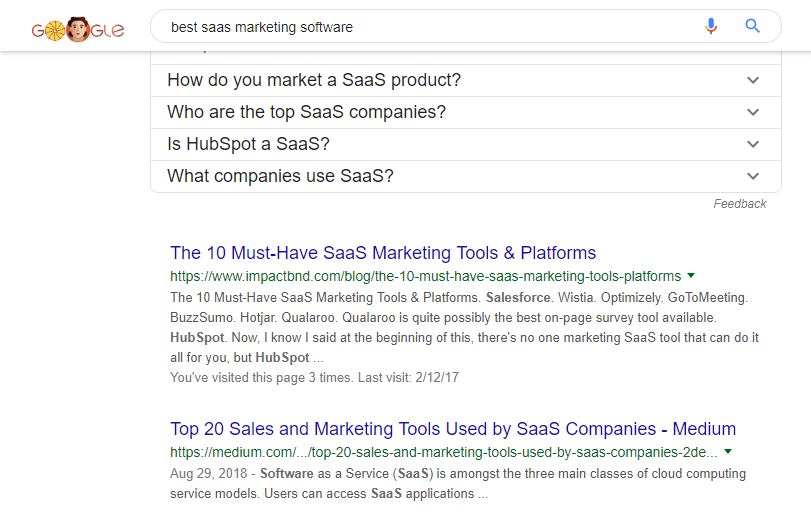
Directories and other non-competing sites are intermediaries between you and search engines.
On the other hand, there may be dozens of websites on the first page of the organic search results. Even if a potential customer sees your site first, it’s not a given that he or she will stop there and won’t continue to explore other options below.
In general, whether you are on the top of Google or not, it is beneficial for you to “be friends” with the websites on the first page. If you are represented on many sites on the first page, you will garner both traffic and customer attention.
Step 3. Analyzing the Digital Market of SaaS Products Through the Eyes of Potential Customers
How to get more organic traffic using the power of third-party sites
- Analyze the Google search results on relevant queries
This is a long and tedious stage, but very effective. The idea is simple — you should see what users see when they enter relevant queries. In the future, you will be able to try to get into each of the results of the search.
So, you are armed with VPN (for example, TunnelBear) and with the most relevant keywords, which you should already have after the previous stages.
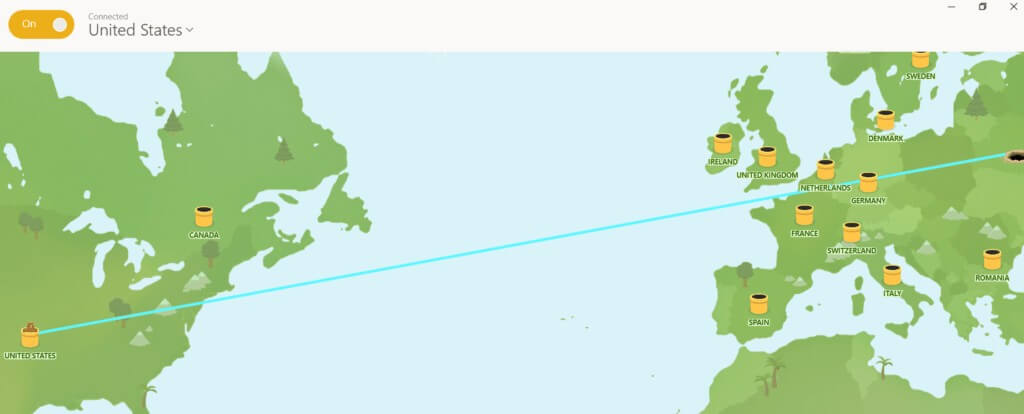
Open the browser window in the “Incognito” mode and start methodically looking through the first 10-15 results for each query.
Of course, you can speed up the process using an automatic scraper (for example, Simple SERP Scraper). That is, you should export the search results to a sheet and then dig into it.
How Can Kraftblick Help Your Software Company?

- We build marketing strategies from scratch and fix existing ones. More about that here.
- We provide consultations to company owners, directors, heads of marketing and sales, marketers. This is how we do it.
See you soon 🙂
Now, systematically open each result and determine what sites appear above yours. Here are some examples of what may appear in the top search results:
- Directories
These are sites like Capterra, Clutch, and GoodFirms. You should be represented there.
There’s a lot to be said about directories. To save time, we’ve have prepared a presentation on how to search and select directories with high traffic, how to get into them, how to stand out among your competitors, as well as other hacks that aren’t so obvious.
The presentation can be viewed right here.
- Listings
These are specific articles in blogs where the author has listed companies for some reason.
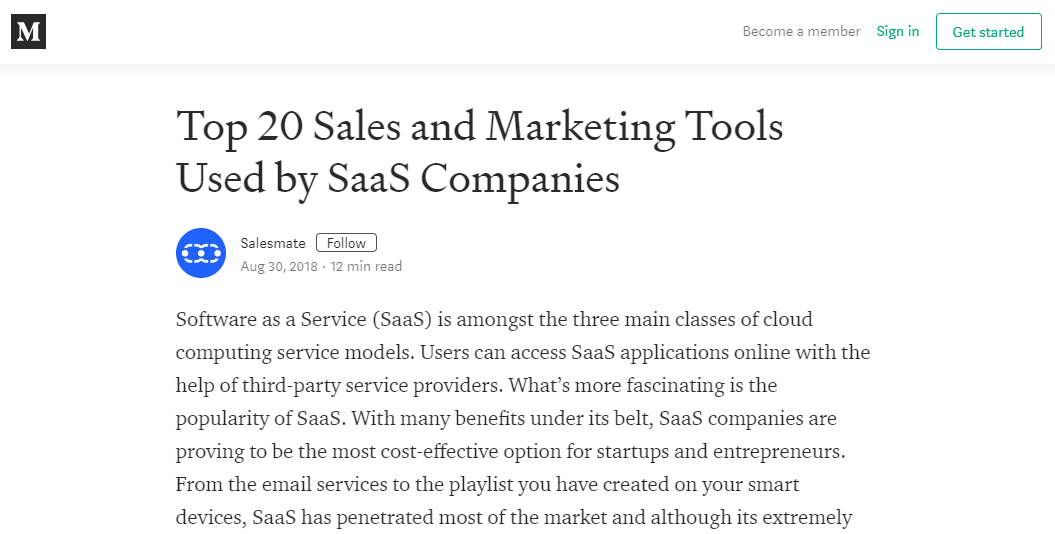
Listing example.
You can get traffic and leads from someone else’s listings in the top of Google.
![]()
Listings look different from directories because they’re usually in the form of blog posts. They have authors whom you can ask about being included in their articles.
Typically, getting into such listings costs money (sometimes it’s free, but not on the first pages of Google).
The cost often depends on the position in the listing that you want to take. The higher the position, the more website visits you can get. Also, in this case, you can bargain with the authors.
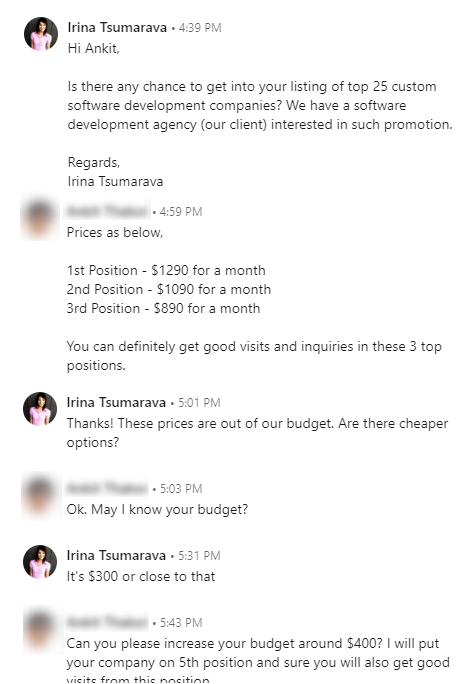
- Q&A sites
These are resources like Quora and StackOverFlow.
Their main distinction from the previously mentioned websites is that they give you the ability to add content yourself. This doesn’t mean it won’t be moderated, by the way.

Quora works on the principle of all social networks. The more upvotes you get, the higher your answer moves in the rankings.
Important! When looking for suitable questions where you can add your answer, look at the statistics of the question.
If a question has a lot of views, then there is a high probability that it is ranked well in Google and gets lots of organic traffic.
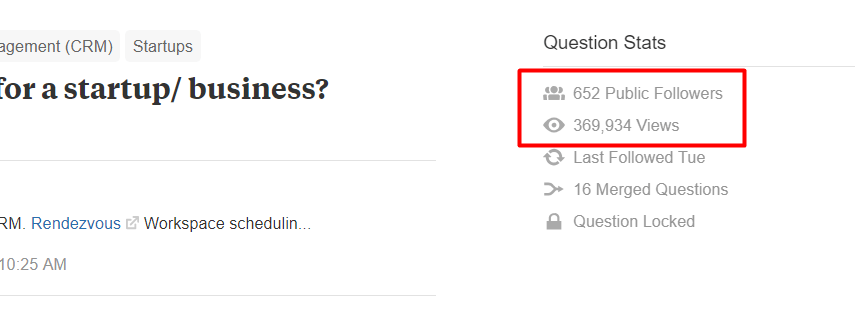
- Articles
We are talking here about articles on related topics that by chance (or thanks to good optimization) are in the top rankings for queries that interest you.
You can try to contact the authors of such articles through the social network or the form on the site and ask them to add a link to your company in the post (for a modest fee or for free).
***
This part of our step-by-step action plan is smaller than the previous two.
In the final fourth part of the guide, we’ll explain how to put together everything that we’ve discussed in these three parts.
This document has been edited with the free version of the instant HTML converter. Try it here and use it every time for your projects.
